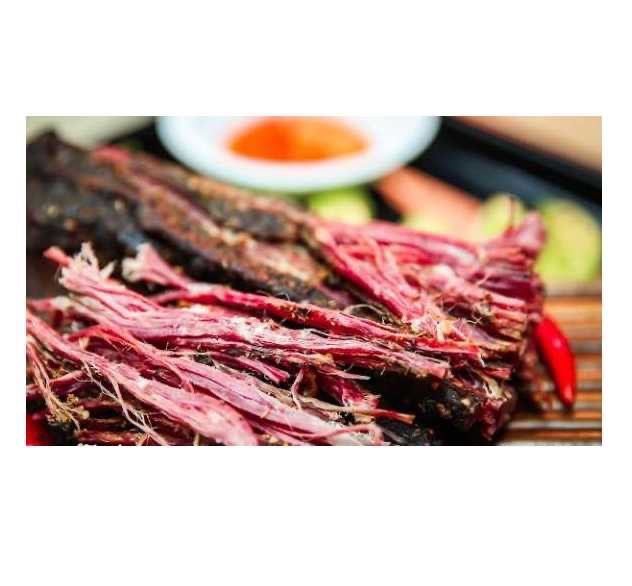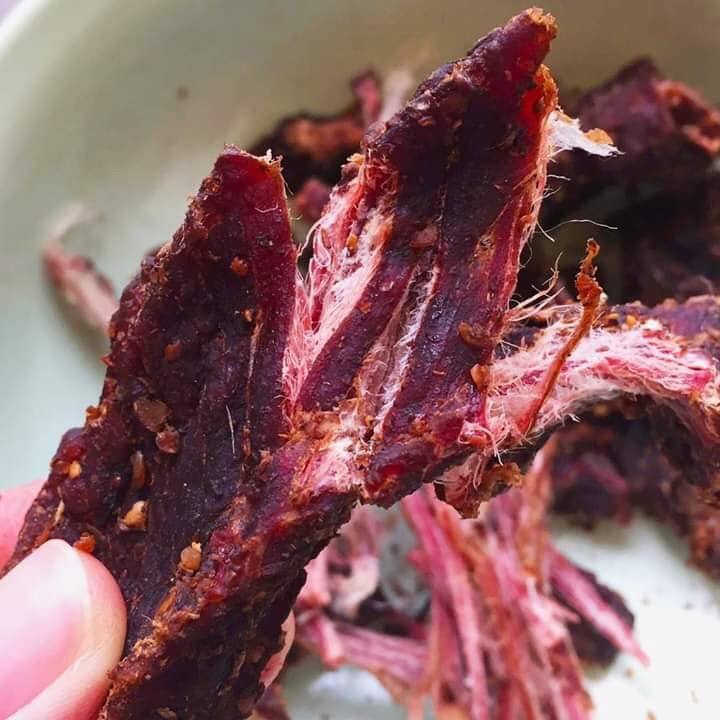The application of freeze-drying technology in the food industry is becoming increasingly widespread. Guess what we’ve discovered? Freeze-dried beef! This is definitely a new frontier for food enthusiasts.

The Production Process of Freeze-Dried Beef
The process of making freeze-dried beef is relatively complex and involves a series of steps. Here is the process:
Selecting the Meat:
First, you must choose the right type of meat for freeze-drying. Typically, meats with firm textures and fine muscle fibers, such as loin or leg meat, are selected.
Deboning and Cutting:
The selected meat is deboned and cut into chunks or strips as required for further processing.
Marinating:
The meat pieces are soaked in a marinade. The marinade’s formula can be adjusted according to taste and requirements, with common ingredients including salt, sugar, spices, and seasonings. The marinating time usually ranges from several hours to a day, ensuring the meat pieces are thoroughly seasoned and retain their tenderness.
Pre-Treatment:
After marinating, the meat pieces are cooled and pre-treated, such as by removing excess moisture or surface fat, to prepare for the drying process.
Freezing:
The pre-treated meat pieces are placed in a freeze-drying machine to freeze, which helps maintain the quality and texture of the meat during the drying process.
Freeze-Drying:
After freezing, the freeze-drying machine adjusts the internal pressure to create a low-temperature vacuum environment. In this environment, moisture is sublimated directly from ice to vapor, preserving the meat’s quality and nutrients.
Packaging:
Once freeze-drying is complete, the beef is placed in vacuum-sealed packaging bags to prevent moisture and air ingress, thereby extending its shelf life.

The Flavor of Freeze-Dried Beef
The flavor of freeze-dried beef primarily depends on the marinating and seasoning methods and can be adjusted to personal taste. Here are some common flavor adjustments:
- Original Flavor: The beef can be kept in its original flavor, seasoned only with an appropriate amount of salt and pepper, retaining the natural flavor of the beef. This method suits those who prefer a pure beef taste.
- Spicy Flavor: Spices such as chili powder, Sichuan pepper, ginger, and garlic can be added to give the beef a spicy taste. This flavor is suitable for those who like spicy food or need to warm up in cold environments.
- Sweet Flavor: Ingredients like sugar, honey, and soy sauce can be added for a sweet taste. This flavor is suitable for those who prefer sweets or are sensitive to spicy foods.
- Soy Sauce Flavor: Condiments such as doubanjiang, soy sauce, and cooking wine can be used to give the beef a savory flavor, suitable for pairing with rice or noodles.
- Fruity Flavor: Adding fruit juice, fruit vinegar, or jams can give the beef a fresh fruity taste, ideal for consumption in summer for a refreshing experience.
- Coffee Flavor: Coffee or cocoa powder can be used to give the beef a deep coffee flavor, appealing to those who enjoy unique tastes.
Nutritional Value of Freeze-Dried Beef
- High Protein: Beef is an important source of high-quality protein, and freeze-dried beef retains much of this protein. Typically, 100 grams of freeze-dried beef contains over 20 grams of protein, making it a high-quality protein source beneficial for maintaining muscle health and repairing tissues.
- Rich in Trace Nutrients: Freeze-dried beef contains rich trace nutrients such as iron, zinc, and the B vitamins. Iron is essential for hemoglobin, which helps transport oxygen throughout the body; zinc is crucial for the immune system and wound healing; and B vitamins are involved in energy metabolism and nervous system function.
- Low Fat: Compared to other meats, beef has a lower fat content, especially lean cuts. Freeze-dried beef is usually made from defatted cuts, making it suitable for a low-fat diet.
- Long Shelf Life: The removal of moisture during the freeze-drying process allows the beef to be stored for long periods without losing nutritional value, making it an ideal choice for outdoor activities or emergency food supplies.
- Portability: After processing, freeze-dried beef is light and compact, making it easy to carry and store. This makes it an ideal food choice for hiking, camping, expeditions, and other outdoor activities, providing high-quality nutritional support.

Applications of Freeze-Dried Beef
- Outdoor Activities: Freeze-dried beef is particularly suited for hiking, camping, and mountain climbing. It is lightweight, easy to carry, and does not require refrigeration, providing essential high-protein nourishment to help restore strength and maintain energy.
- Fitness and Sports: For fitness enthusiasts and athletes who need a high-protein diet to increase muscle mass or improve physical performance, freeze-dried beef is a convenient protein source. It can be used as part of a dietary supplement or recovery meal.
- Travel and Exploration: For long-term travelers and explorers, freeze-dried beef offers a sustainable food option that can be used in environments lacking fresh food.
- Fast-Paced Modern Life: In today’s fast-paced and efficient lifestyle, freeze-dried beef serves as a quick, convenient, and nutritious meal option, ideal for busy professionals and students needing a rapid energy and nutrition boost.
- Emergency Preparedness: In emergency situations or disasters when food supply might be disrupted, freeze-dried beef, with its long shelf life and easy storage, becomes an ideal emergency food. It can be stored for years without relying on electricity or other modern amenities.
- Military Use: Freeze-dried food is an important component of military rations. Freeze-dried beef provides essential nutrition to soldiers in complex environments, especially when on the front lines or in remote areas.
- Space Food: Due to its lightweight and easy-to-store characteristics, freeze-dried beef is also used as space food, providing astronauts with necessary nutrients in space.

Freeze-dried beef, as a nutritious, healthy, and tasty food, is popular among many people. For more information on freeze-dried foods, you can refer to the following articles:
Freeze Dry Meat—A New Way To Preserve Meat
Freeze Drying Technology: Diverse And Extensive Uses
Astronaut Freeze Dried Ice Cream:A Novel Delicacy
How Do You Freeze Dry Strawberries?






